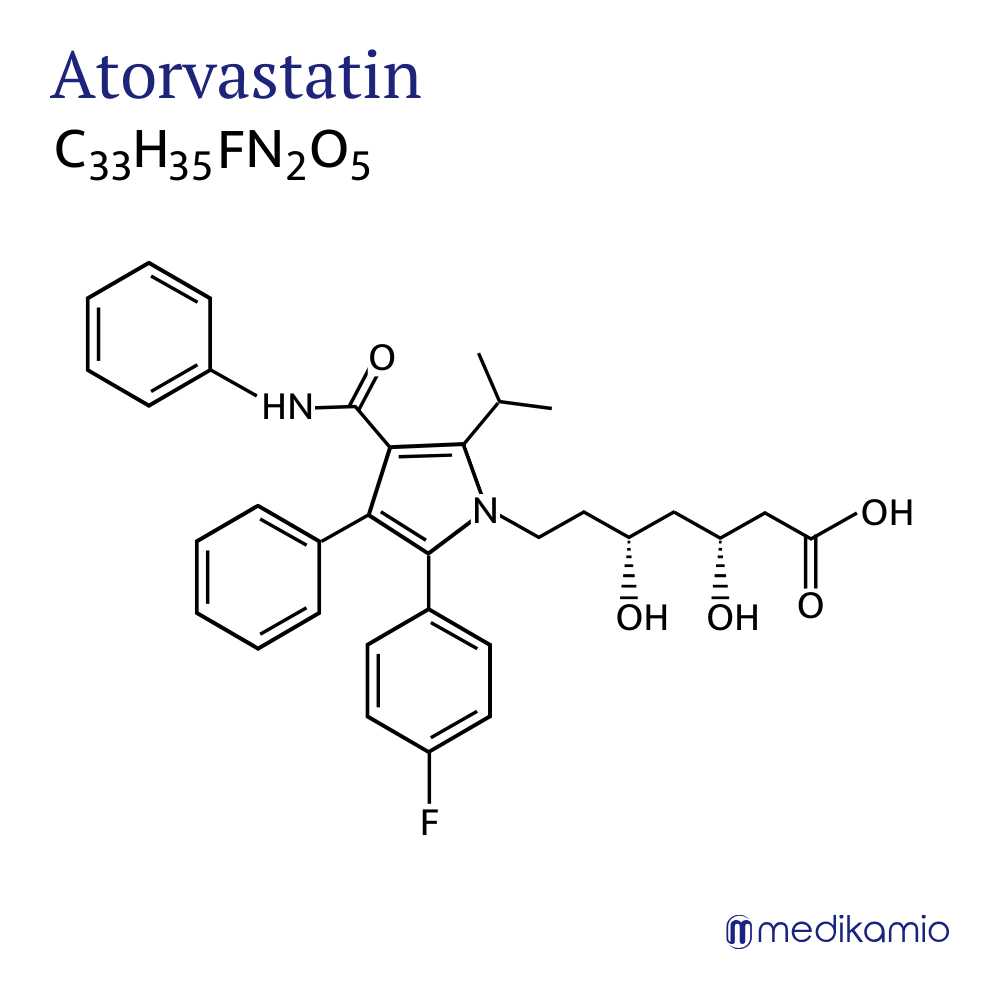Effect
Atorvastatin inhibits the liver enzyme HMG-CoA reductase. This is responsible for cholesterol production. The active ingredient slows down the conversion of HMG-CoA (3-hydroxy-3-methylglutaryl coenzyme A) into mevalonate, the salt of mevalonic acid. This slowdown leads to an increase in the number of LDL receptors on the cell surface in the liver. As a result, more LDL is absorbed into the liver cells and therefore less of it is in the blood. Atorvastatin also lowers VLDL-C (very low-density lipoprotein cholesterol), triglycerides and IDL (intermediate density lipoprotein and apolipoprotein B). Atorvastatin also increases HDL-C (high-density lipoprotein cholesterol).
Atorvastatin is metabolized in the liver, mainly by the enzyme CYP3A4. It is dose-dependent, i.e. the more active ingredient is administered, the higher the concentration in the blood. Due to the massive first-pass effect of atorvastatin, the bioavailability, i.e. the percentage of the active substance available in the blood, is only 14%. The first-pass effect occurs with most active ingredients that are absorbed in the stomach or small intestine. The active substance is absorbed through the mucous membrane of the stomach or small intestine and transported through the portal vein (vena portae) to the liver. In the liver, before the active ingredient enters the systemic circulation, it is metabolized for the first time, so that the active ingredient is then available to the body to a lesser extent. The first-pass effect has a major influence on the bioavailability of the respective active ingredients in the body. The half-life, i.e. the time the body needs to excrete half of the active ingredient, is around 14 hours. The maximum plasma concentration (Cmax), i.e. the maximum concentration of the active ingredient in the blood plasma (liquid cell-free part of the blood), is reached after 1-2 hours.


